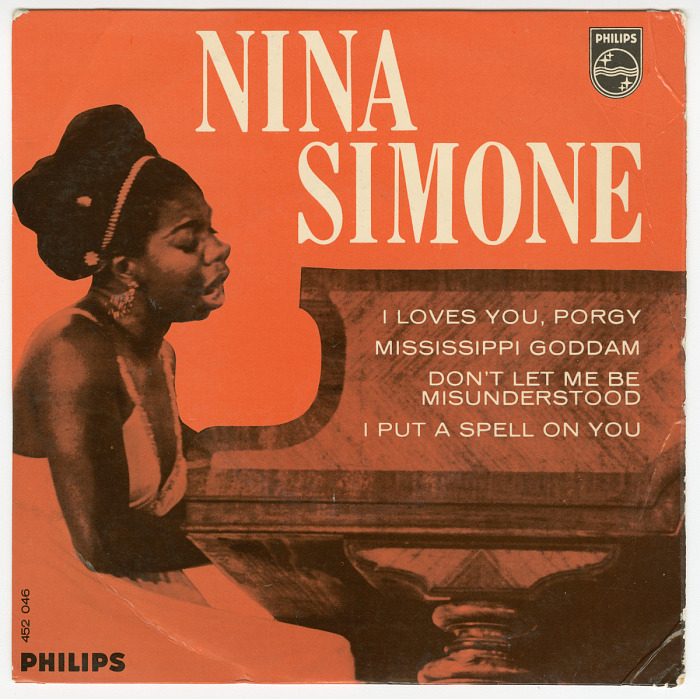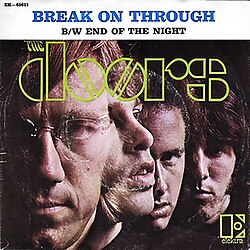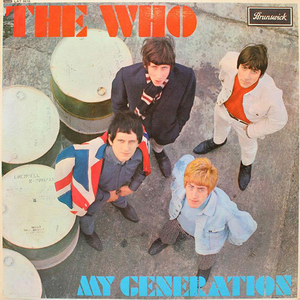 When Frank Sinatra released “Strangers in the Night” in 1966, the world was introduced to a song that would become one of the most iconic ballads of the 20th century. It is more than a classic pop standard; it is an exquisite tapestry of romance, longing, and effortless cool. From the first shimmering orchestral notes, listeners are transported into a mood of elegant intimacy, where the excitement of a chance encounter and the possibility of love hang in the air. Sinatra’s smooth, commanding voice guides the listener through every heartbeat of the story, delivering a performance that balances sophistication with raw emotion. Over decades, “Strangers in the Night” has become synonymous with romance, a song that evokes moonlit meetings, whispered secrets, and the thrilling uncertainty of newfound love. Its enduring power lies in Sinatra’s ability to make each note feel personal, each lyric resonate with intimacy, and each pause between phrases a delicate brushstroke on the canvas of emotion.
When Frank Sinatra released “Strangers in the Night” in 1966, the world was introduced to a song that would become one of the most iconic ballads of the 20th century. It is more than a classic pop standard; it is an exquisite tapestry of romance, longing, and effortless cool. From the first shimmering orchestral notes, listeners are transported into a mood of elegant intimacy, where the excitement of a chance encounter and the possibility of love hang in the air. Sinatra’s smooth, commanding voice guides the listener through every heartbeat of the story, delivering a performance that balances sophistication with raw emotion. Over decades, “Strangers in the Night” has become synonymous with romance, a song that evokes moonlit meetings, whispered secrets, and the thrilling uncertainty of newfound love. Its enduring power lies in Sinatra’s ability to make each note feel personal, each lyric resonate with intimacy, and each pause between phrases a delicate brushstroke on the canvas of emotion.
The song’s immediate charm is apparent from the opening orchestration. Arranged by Ernie Freeman, the lush strings and warm brass set the stage for a musical experience that feels cinematic yet accessible. The melody is both tender and compelling, drawing listeners into the narrative of two strangers meeting under mysterious circumstances, only to realize that their encounter may hold the promise of something profound. It’s a perfect illustration of Sinatra’s artistry: his voice does not merely carry the song; it embodies it, making every subtle inflection and pause a part of the storytelling. The orchestration complements this perfectly, never overwhelming the vocals but instead creating a rich, enveloping atmosphere that lingers long after the music stops.
The Story Behind the Song
“Strangers in the Night” was originally written by Bert Kaempfert, with lyrics by Charles Singleton and Eddie Snyder. The song was initially titled “Beddy Bye” and composed as an instrumental, but Kaempfert and the lyricists reworked it into a lyrical masterpiece, creating the timeless story of an unexpected, magical encounter. Its lyrics are deceptively simple: two strangers meet, feel an undeniable connection, and fall into love almost instantly. Lines like “Strangers in the night, exchanging glances / Wondering in the night, what were the chances” perfectly capture the thrill and mystery of unexpected romance. There is a sense of fate and inevitability woven into the lyrics, which resonates universally—everyone can relate to a moment when life seemed to pivot on a fleeting encounter.
Sinatra’s interpretation of the song elevated it from a melodic composition to a cultural phenomenon. His phrasing, timing, and ability to convey emotion made the lyrics feel authentic, almost improvised, as if he were narrating a story that happened to him personally. The combination of Kaempfert’s romantic melody, the lyricists’ poetic simplicity, and Sinatra’s incomparable delivery created a musical experience that remains unmatched.
1966: The Era of Elegance in Music
The release of “Strangers in the Night” coincided with a period of great change in popular music. Rock ‘n’ roll was evolving, the British Invasion was in full swing, and yet Sinatra remained at the forefront of a different musical world—one steeped in elegance, orchestration, and vocal mastery. Amid the rising tide of bands like The Beatles, Sinatra offered listeners a return to sophistication and emotional depth.
The song’s success was immediate. It topped the Billboard Hot 100, won Grammy Awards for Record of the Year, Best Male Vocal Performance, and Best Arrangement, and became a definitive highlight of Sinatra’s mid-1960s repertoire. Its popularity bridged generational gaps, appealing to fans of traditional pop as well as younger audiences discovering the timeless allure of a perfectly executed ballad. In an era dominated by new musical experimentation, “Strangers in the Night” demonstrated that the classics still had the power to capture hearts worldwide.
Musical Excellence and Vocal Mastery
From a musical perspective, “Strangers in the Night” is a masterclass in balance and restraint. The orchestration by Ernie Freeman is lush but never overpowering, blending strings, brass, and rhythm section in a way that complements rather than competes with Sinatra’s voice. The song’s tempo and phrasing allow Sinatra to stretch and play with the melody, delivering each note with precision and emotional nuance.
Sinatra’s vocal performance is particularly notable for its subtlety. He doesn’t over-sing or rely on exaggerated dramatics; instead, he imbues the song with a conversational intimacy. The pauses between lines, the slight dips and rises in pitch, and the breathy quality of his tone all contribute to a sense of personal connection. The result is a performance that feels both grand and intimate, cinematic yet relatable, a rare combination that few singers have achieved with such consistency.
Lyrics and Emotional Resonance
The lyrics of “Strangers in the Night” resonate because they tell a story everyone has experienced in some form: the excitement of a chance meeting, the thrill of unexpected connection, and the vulnerability inherent in opening oneself to another person. The song’s narrative arc is simple but effective, moving from initial glances and curiosity to the moment of romantic realization. Sinatra’s interpretation adds layers of emotion to each line, conveying both longing and joy.
There is also a subtle tension in the song, a push-and-pull that mirrors real-life romance. The lyrics are playful yet sincere, blending hope and uncertainty in a way that feels natural and relatable. This duality—balancing romantic idealism with grounded emotion—is one of the reasons the song has remained timeless.
Cultural Impact and Legacy
“Strangers in the Night” has transcended its era to become a cultural touchstone. It has been featured in films, television, and countless romantic settings, often serving as a shorthand for elegance, sophistication, and the magic of unexpected encounters. Its iconic opening notes are instantly recognizable, and Sinatra’s performance continues to influence vocalists and entertainers across genres.
The song’s impact is also evident in its role in defining Sinatra’s legacy. While he had already achieved legendary status by the mid-1960s, “Strangers in the Night” reaffirmed his relevance in a rapidly changing musical landscape. It showcased his ability to adapt to contemporary songwriting while remaining true to the vocal style and emotional depth that made him an icon.
Additionally, the song played a pivotal role in popularizing romantic ballads in mainstream culture. Its success proved that audiences still craved emotionally rich, orchestrated music, even as rock and pop were increasingly dominated by electric guitars and experimental production. The song bridged generational divides, appealing to long-time Sinatra fans while captivating younger listeners who may have been discovering the allure of classic pop standards for the first time.
The Grammy Moment and Enduring Recognition
At the 1967 Grammy Awards, “Strangers in the Night” swept the top categories, winning Record of the Year, Best Male Vocal Performance, and Best Arrangement. These accolades reflected the industry’s recognition of both Sinatra’s exceptional vocal work and the song’s sophisticated composition. Over time, the track has been celebrated as one of Sinatra’s signature songs, a highlight of his extensive catalog, and a defining piece of mid-20th-century American popular music.
Why the Song Still Resonates Today
Decades after its release, “Strangers in the Night” remains a standard in the American songbook, a testament to the timelessness of romance, storytelling, and impeccable vocal artistry. Its enduring appeal lies in its ability to evoke emotion and transport listeners into a world of elegance and intimacy. Whether experienced through Sinatra’s original recording, a live performance, or a modern cover, the song’s themes of connection, chance, and love continue to resonate.
For contemporary listeners, it is both a historical artifact and a living piece of art. It captures a moment in musical history while remaining emotionally relevant, proving that true artistry is not bound by time. The song’s sophisticated orchestration, compelling narrative, and masterful vocal delivery create a listening experience that is as rich today as it was in 1966.
Conclusion: A Timeless Anthem of Romance
Released in 1966, Frank Sinatra’s “Strangers in the Night” is more than a chart-topping hit—it is an enduring testament to the power of emotion, performance, and storytelling in music. Its lush orchestration, elegant melody, and unforgettable lyrics have ensured that it remains a cornerstone of popular culture. Sinatra’s masterful vocal delivery transforms a simple tale of chance and romance into an experience that resonates universally, transcending generations and musical trends.
Even decades after its initial release, “Strangers in the Night” continues to captivate audiences, embodying the magic of unexpected encounters and the timeless allure of love at first sight. It is a song that celebrates elegance, emotion, and the extraordinary in the ordinary, and it stands as one of the finest examples of Sinatra’s unparalleled artistry and enduring cultural influence.


